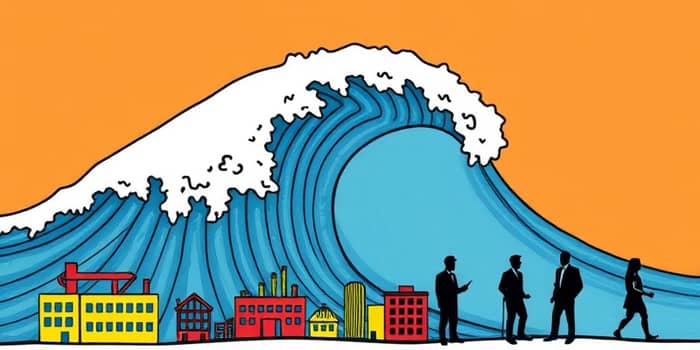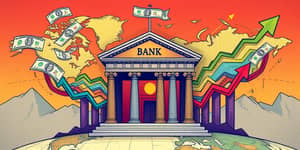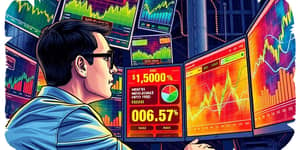
Every economy experiences a rhythm of growth and decline. Understanding how price levels shift over time can empower investors, businesses, and policymakers to make informed decisions and weather unpredictable market conditions. This article explores the interplay between inflation, deflation, and the stages of economic cycles, offering both insight and practical strategies to build lasting resilience.
Economic cycles consist of four repeating phases: expansion, peak, contraction, and trough. Recognizing these stages helps stakeholders anticipate changes and adapt effectively.
Key indicators such as GDP growth, unemployment rates, and consumer spending track these shifts, guiding monetary and fiscal policy actions.
Inflation is a sustained rise in the general price level, eroding purchasing power over time. While moderate inflation can signal a healthy expansion, runaway price increases can destabilize economies.
Inflationary pressures affect market sectors differently. Consumers face higher living costs, investors see asset values rise, and debtors benefit from lower real interest burdens. Central banks respond with targeted interest rate adjustments to keep inflation near desired levels—often around 2% in advanced economies.
Deflation occurs when the inflation rate dips below zero, triggering a general decline in prices. It may seem beneficial to pay less for goods, but sustained deflation brings serious challenges.
In a deflationary environment, businesses see shrinking revenues, wage cuts, and layoffs. Savers benefit from increasing money value, but the broader economy risks a downward spiral of reduced spending and investment.
Inflation and deflation manifest uniquely across market sectors depending on the phase of the economic cycle. The following table summarizes these dynamics:
This framework clarifies why certain sectors—like housing or consumer discretionary—outperform in expansion, while bond markets and cash holdings gain appeal during contraction.
Navigating inflation and deflation requires proactive policy interventions and strategic positioning. Consider these approaches:
For businesses, controlling costs, preserving pricing power, and maintaining flexible balance sheets are essential. During inflation, firms with strong brand equity can pass through higher costs. In deflationary times, lean operations and nimble workforce management prove invaluable.
Central banks and governments play a critical role in stabilizing price levels. In inflationary periods, rate hikes and quantitative tightening cool overheated economies. During deflation, monetary authorities cut rates, undertake quantitative easing, and governments deploy fiscal stimulus—such as infrastructure projects and tax incentives—to reignite growth.
Looking ahead to 2025 and beyond, policymakers remain vigilant. Emerging markets must balance development goals with price stability, while advanced economies watch for inflation expectations shifts that could influence wage negotiations and investment trends. Technological innovations and supply-chain evolutions add further nuance to cycle dynamics.
Understanding the delicate dance between inflation, deflation, and economic cycles equips individuals and organizations to plan with confidence. By anticipating market shifts, diversifying portfolios, and supporting adaptive policies, you can turn volatility into opportunity.
Embrace a mindset of continuous learning and preparedness. With thoughtful strategies and a long-term perspective, you’ll be poised to thrive through every phase of the economic journey.
References













